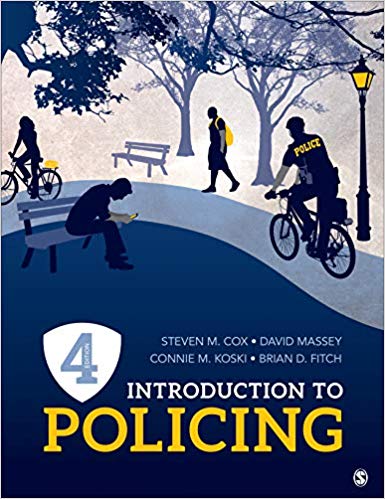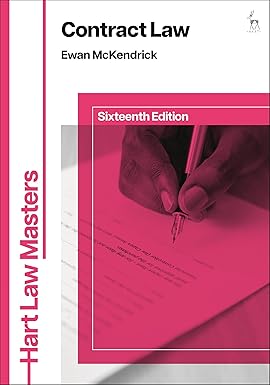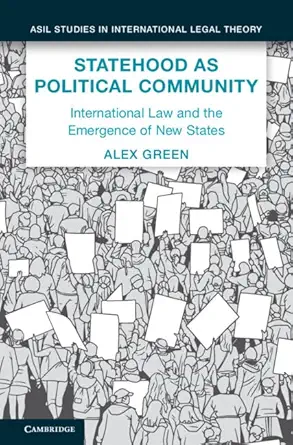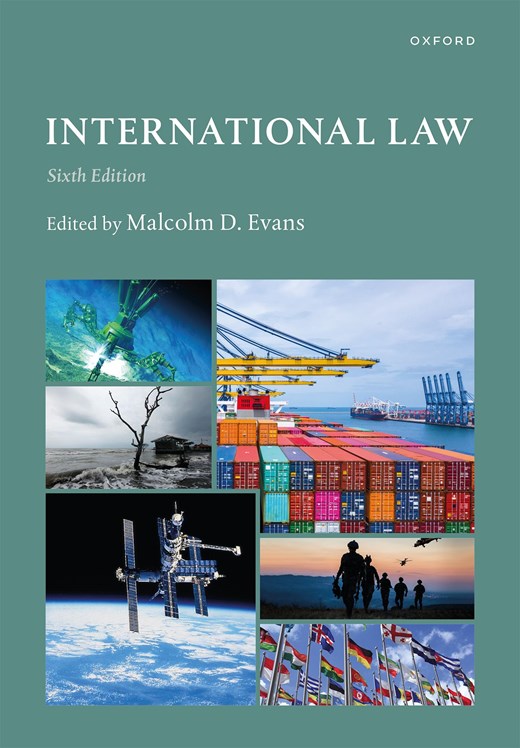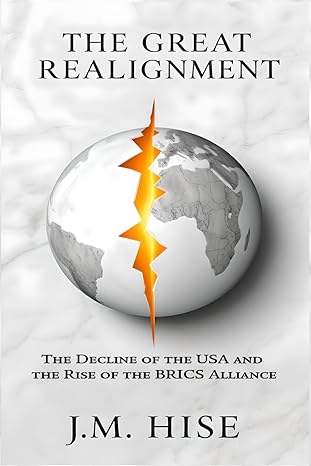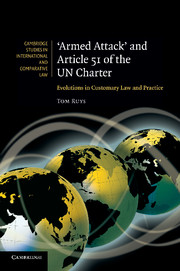Written and extensively updated by an author team that includes former and current law enforcement officers, Introduction to Policing focuses on the thought-provoking, contemporary issues that underscore the challenging and rewarding world of policing. The authors skillfully balance research and practice to offer readers an overview of both the foundations of policing and the expanded role of today’s police officers. Evolving with the modern realities of the field, the Fourth Edition discusses major new and ongoing impactful events, such as the political shift marked by the U.S. presidential election of 2016 and expanded coverage of women and minorities in policing. The accessible and engaging writing style, coupled with unique coverage of the issues of policing in multicultural communities, the impact of technology on policing, and policing strategies and procedures, make this bestselling book a must-have.
چکیده فارسی
که توسط یک تیم نویسنده شامل افسران سابق و فعلی مجری قانون نوشته شده و بهطور گسترده بهروزرسانی شده است، مقدمهای بر پلیس بر موضوعات قابل تأمل و معاصری تمرکز دارد که بر دنیای چالشبرانگیز و پر ارزش پلیس تأکید میکند. نویسندگان به طرز ماهرانهای بین تحقیقات و تمرینها تعادل برقرار میکنند تا به خوانندگان یک دید کلی از پایههای پلیس و نقش گسترده افسران پلیس امروزی ارائه دهند. ویرایش چهارم که با واقعیتهای مدرن این حوزه تکامل مییابد، رویدادهای تأثیرگذار جدید و جاری را مورد بحث قرار میدهد، مانند تغییر سیاسی که با انتخابات ریاستجمهوری ایالات متحده در سال 2016 مشخص شد و پوشش گسترده زنان و اقلیتها در پلیس. سبک نوشتاری در دسترس و جذاب، همراه با پوشش منحصر به فرد مسائل پلیس در جوامع چندفرهنگی، تأثیر فناوری بر پلیس، و استراتژیها و رویههای پلیسی، این کتاب پرفروش را به یک کتاب ضروری تبدیل کرده است.
ادامه ...
بستن ...
Ebook details:
عنوان: Introduction to Policing
نویسنده: Steven M. Cox, David W. Massey, Connie M. Koski, Brian D. Fitch
ناشر: SAGE Publications, Inc; Fourth edition (January 18, 2019)
زبان: English
شابک: 1544339615, 978-1544339610
حجم: 26 Mb
فرمت: Epub + Converted pdf
ادامه ...
بستن ...
PREFACE
ABOUT THE AUTHORS
PART I. FOUNDATIONS OF POLICING
Chapter 1. Policing in the United States
Chapter Learning Objectives
Law Enforcement Today
Public Scrutiny in Our Modern Society
Increased Danger for Police
Police and the Public Trust
The Concept and Mandate of the Police
Police Stories 1.1: Commander Dan Koenig, LAPD Retired
Scope of the Law Enforcement Sector
Levels of Policing
State Police
Local Police
Sheriffs and Deputy Sheriffs
Federal Law Enforcement
A Changing Landscape
You Decide 1.1
A Changing Workforce
Case in Point 1.1: Racketeering, Drug Conspiracy Charges for 27 in Schenectady, New York
Additional Types of Police/Security
Private Security
Special Jurisdiction Police
Auxiliary, Reserve, and Special Police
Conservation Police Officers and Game Wardens
Tribal Police Officers
Chapter Summary
Key Terms
Discussion Questions
Internet Exercises
Chapter 2. A Brief History of Police in the United States
Chapter Learning Objectives
English Roots of Policing
The Evolution of Early U.S. Policing
Exhibit 2.1: Peel’s Principles of Policing
The Political Era
Exhibit 2.2: Origin of the Term Sheriff
Case in Point 2.1
Police Accountability
The Reform Era
The Era of Social Upheaval (1960s and 1970s)
Research on Police Effectiveness
Exhibit 2.3: Commission on Accreditation for Law Enforcement Agencies
The Community-Policing Era (1980–2000)
Police Stories 2.1: Greg Seidel, Captain (Retired), Petersburg, Virginia
You Decide 2.1
The Homeland Security Era (2001–Present)
Some Contemporary Policing Strategies
Intelligence-Led or Intelligence-Based Policing
Terrorism-Oriented Policing
Case in Point 2.2
Exhibit 2.4: How the Long Beach Police Department Has Adapted to the Terrorism Threat
Policing in the Past, Present, and Future
Exhibit 2.5: Contemporary Police Issues
Chapter Summary
Key Terms
Discussion Questions
Internet Exercises
Chapter 3. Police Organization and Administration
Chapter Learning Objectives
Organizational Structures
Police Hierarchy
Hierarchy and Communication
Exhibit 3.1: Incident Command System (ICS)
The Paramilitary Structure
You Decide 3.1
Police Militarization
Decentralized and Proactive Organizations
Exhibit 3.2: CompStat
Police Organizations in Context
Operations Division
Patrol
Investigations
Case in Point 3.1
Administrative or Staff Services Division
Exhibit 3.3: Civilian Staff
Organizational Substructures
Functional Design
Geography
Scheduling
Police Stories 3.1: Commander Dan Koenig, LAPD Retired
Handling Change in Police Organizations
Police Unions and Collective Bargaining
Police Unions and Professionalism
Police Professionalism
You Decide 3.2
Professional Literature and Research
Code of Ethics
Professional Associations
Self-Improvement
Academic Field
Accreditation
Chapter Summary
Key Terms
Discussion Questions
Internet Exercises
PART II. POLICE OPERATIONS
Chapter 4. Recruitment and Selection of Police Officers
Chapter Learning Objectives
The Importance of Recruitment and Selection
Generational Issues
Exhibit 4.1: Traits and Principles of an Effective Police Officer
Exhibit 4.2: Boomers to Generation Z
The Process
Antidiscrimination Legislation
Equal Employment Opportunity and Affirmative Action
Title VII of the Civil Rights Act of 1964
The Age Discrimination in Employment Act
Exhibit 4.3: Ricci v. DeStefano
The Americans with Disabilities Act
Entry-Level Recruitment and Selection
Costs of Outreach
Targeted Recruiting
Diversity
Monitoring and Evaluating
Recruiting and Retaining Women Officers
Exhibit 4.4: Recruiting Female Officers
Women and Promotions
Police Stories 4.1: Chief Bernadette DiPino of the Sarasota Police Department, Retired Chief of the Ocean City Police Department
Recruiting and Retaining Officers of Color
Exhibit 4.5: Commission on Peace Officer Standards and Training (POST)
Testing of Candidates
Status Tests
U.S. Citizenship
Preference Points
Age
Physical Tests
Physical Agility Tests
Height-Weight Proportion Tests
Vision Requirements
Medical Examinations
Mental Tests
Tests of Intelligence, Knowledge, or Aptitude
Psychological Tests
Tests of Morality
Background Investigations
Drug Tests
Polygraph Examinations
Case in Point 4.1
Exhibit 4.6: Polygraph Examination Areas
Tests of Ability to Communicate
The Oral Board
Police Stories 4.2: Gene L. Scaramella, Former Police Officer, Author, and Educator
Exhibit 4.7: Typical Performance Dimensions
Supervisory Recruitment and Selection
Grooming Supervisors
Testing Candidates
Assessment Centers
Strengths of the Assessment Center
Recruitment and Selection of Police Chiefs
You Decide 4.1
Chapter Summary
Key Terms
Discussion Questions
Internet Exercises
Chapter 5. Police Training and Education
Chapter Learning Objectives
Police Education
Background
Higher Education and the Police: A Debate
Arguments in Favor of Education
You Decide 5.1
What Do Agencies Require?
What Do the Police Think?
Research on College Education and Police Performance
Research Results
Positive Results
Inconclusive Results
The Importance of Leadership in Education: What Are Leaders to Do?
Evaluating Leaders
Police Training
Purposes of Training
What Kind of Training and How Much?
Implicit Bias Training
Department Support for Training
Types of Training
Recruit Training
Police Stories 5.1: Dave King, Commander, Vancouver Police Department
Training and Community-Oriented Policing
Field Training
Ongoing In-Service Training
Licensing
Technological Advances and Online Training
Case in Point 5.1
Exhibit 5.1: Internet-Based Training Portal Topics
Who Should Conduct Police Training?
Challenges
Funding for Training
Mandatory Versus Voluntary Training
Training and Police Leadership
Training Effectiveness
Chapter Summary
Key Terms
Discussion Questions
Internet Exercises
Chapter 6. Police Work: Operations and Functions
Chapter Learning Objectives
Basic Police Functions
Order Maintenance and Law Enforcement
Broken Windows and Zero Tolerance Policing
Police Stories 6.1: Doreen Jokerst, Commander, Parker Police Department
Policing the Mentally Ill
Investigations and Forensic Science
Investigations and Community-Oriented Policing
Forensics
Styles of Policing
Watchman Style
Legalistic Style
Service Style
You Decide 6.1
Patrol Strength and Allocation
Intuitive Approach
Comparative Approach
Case in Point 6.1
Workload Analysis
Exhibit 6.1: Patrol Staffing Requirements
Other Types of Patrol
Evaluating Patrol
Evaluating Police Performance
Evaluating Officer Performance
Evaluating Agency Performance
Case in Point 6.2: Baltimore Police Reforms Move Forward Slowly and Behind the Scenes
Police and the Media
Media Relations Programs
Social Media
Chapter Summary
Key Terms
Discussion Questions
Internet Exercises
Chapter 7. Contemporary Strategies in Policing
Chapter Learning Objectives
Community Policing
Exhibit 7.1: Implementing Community-Oriented Policing
The LEMAS Survey
Problem-Oriented Policing
Exhibit 7.2: SARA
Research on Community- and Problem-Oriented Policing
Case in Point 7.1
Criticisms of Community Policing
Rhetoric Versus Practice
Crime Reduction
Costs
Corruption
The Current Status of COP and POP
Exhibit 7.3: CAPS: Chicago Alternative Policing Strategy
Innovations in Policing Strategies
Police Stories 7.1: Doreen Jokerst, Commander, Parker Police Department
Information Innovations
CompStat
Intelligence-Led Policing
Evidence-Based Policing
Hot-Spot Policing
Patrol Response Policing
Directed Patrol
Differential Response Policing
Saturation Patrol and Crackdowns
Changing Up the Environment
Situational Crime Prevention
Crime Prevention Through Environmental Design
Collaboration and Organization
Pulling Levers Policing
Policing Processes
Broken Windows
Procedural Justice Policing
You Decide 7.1
Chapter Summary
Key Terms
Discussion Questions
Internet Exercises
PART III. POLICE CONDUCT
Chapter 8. The Police Culture and Work Stress
Chapter Learning Objectives
What Is Culture?
Exhibit 8.1: The Stigma of Being a Cop
Socialization, Isolation, and the Code
Erosion of the Public’s Trust
Coping
Analyzing Police Subculture
Police Stories 8.1: Dave Carlson, Sergeant, Los Angeles County Sheriff’s Department
You Decide 8.1: Police Discretion
Contributing Factors
Danger
Authority
Case in Point 8.1
Performance
Exhibit 8.2: The Police Subculture
The Police Personality: How Real?
Types of Stresses in Police Work
Exhibit 8.3: Working Personalities
Task Demands
Role Demands
Interpersonal Demands
Physical Demands
Effects and Consequences of Police Stress
Exhibit 8.4: Categories of Stressors
Personal Pitfalls
Desensitization
Prejudice
Exhibit 8.5: Positive Effects of Stress
Cynicism
Burnout
Exhibit 8.6: Four Stages That Lead to Police Cynicism
Stress and Police Families
Exhibit 8.7: A Day in the Life
Police Officer Suicide
Research on Police Suicide
Police Shootings and Critical Incidents
Exhibit 8.8: Law Enforcement Officer Deaths, 2017
Police Stories 8.2: Victor Allende, Captain (retired), Los Angeles County Sheriff’s Department
Counteracting Police Stress
Chapter Summary
Key Terms
Discussion Questions
Internet Exercises
Chapter 9. Law, Court Decisions, and the Police
Chapter Learning Objectives
The 1st Amendment
You Decide 9.1
The 2nd Amendment
The 4th Amendment
Case in Point 9.1: Concealed Weapons
Probable Cause and Reasonableness
Searches and Seizures With and Without a Warrant
Police Stops
Police Stories 9.1: Gene L. Scaramella, Former Police Officer, Author, and Educator
Police Searches Incident to Arrest
Consent Searches
The 5th Amendment
The 14th Amendment
The Exclusionary Rule
Police Use of Force
The USA PATRIOT Act, Homeland Security, and Terrorism
Chapter Summary
Key Terms
Discussion Questions
Internet Exercises
Chapter 10. Ethics and Decision-Making
Chapter Learning Objectives
Police Discretion
Factors That Influence Discretion
The Situation, Setting, and Suspect
Departmental Policy and Culture
The Law
Political and Economic Pressure
The Challenge of Discretion
Quotas
Police Stories 10.1: Connie Koski, Author, Professor, and Former Police Officer
Ethics and Police Conduct
Ethics in Police Education
You Decide 10.1
Evaluating Police Ethics
Biased Enforcement and Racial Profiling
Leadership and Improving Decision-Making
Media Relations
Police Stories 10.2: Dave King, Commander, Vancouver Police Department
Intolerance of Malfeasance
Case in Point 10.1
Chapter Summary
Key Terms
Discussion Questions
Internet Exercises
Chapter 11. Police Misconduct and Accountability
Chapter Learning Objectives
Corruption
What Is Corruption?
Background of Corruption
Official Investigation Into Corruption
Other Types of Police Misconduct
Nonfeasance, Misfeasance, and Malfeasance
You Decide 11.1
Drug-Related Corruption
Perjury
Emotional Abuse and Psychological Harassment
Corruption of Authority
Gratuities
Kickbacks
Shakedowns
Bribery
Case in Point 11.1: Corruption and Conspiracy
Opportunistic Theft
Protection of Illegal Activities
Excessive Use of Force
Police Stories 11.1: John Crombach, Former Chief of Police, Oxnard Police Department
Research on Police Misconduct and Use of Force
The Impacts of Misconduct
Race and Police Harassment
Research on Profiling
Causes of Misconduct—Bad Apples or Bad Barrels?
Individual
Case in Point 11.2
Agency
Exhibit 11.1: Justifications for Misconduct
Society
Noble Cause Corruption
Misconduct: Management and Administrative Issues
Whistleblowing
Addressing Misconduct
Accountability
Accountability and Community Policing
Citizen Oversight Groups
Internal Affairs
Police Discipline
Police Story 11.2: Chief David C. Massey, Author and Retired Chief of the Ocean City Police Department
Cameras
Chapter Summary
Key Terms
Discussion Questions
Internet Exercises
Appendix
PART IV. CONTEMPORARY ISSUES IN POLICING
Chapter 12. Policing in a Diverse Society
Chapter Learning Objectives
Policing in a Multicultural and Multiethnic Society
Changing Demographics
Immigration
Mentally Ill
The Problem and Promise of Diversity
Police–Community Conflict
Police–Minority Encounters
Exhibit 12.1: Prejudice and Discrimination
Peer Pressure
Forms of Discrimination
Profiling
Exhibit 12.2: Arrest Rates by Race, by Crime
Profiling the Muslim Community
Legislation on Profiling
Driving or Walking While Black
Research on Police Discrimination
Police Stories 12.1: Connie Koski, Author, Professor, and Former Police Officer
Case in Point 12.1: Use “Terrorist” Label Carefully
Public Image of the Police
Police in the Community
Cultural Diversity and Awareness Training
Police Responsiveness
The Community Role in Multicultural Relations
Citizen Complaints
A Representative Workforce
Women in Policing
Background
Women of Color
Challenges for Women Police Officers
Police Stories 12.2: Connie Koski, Author, Professor, and Former Police Officer
Minority Police Officers
African American Police Officers
Background
Why Become Police?
Department Benefits
Challenges for African American Police Officers
Hispanic Police Officers
Challenges for Hispanic Police Officers
Asian Police Officers
Exhibit 12.3: Clarifying Terminology
LGBTQ Police Officers
Recruiting and Retaining Minorities as Police Officers
Chapter Summary
Key Terms
Discussion Questions
Internet Exercises
Chapter 13. Technology and the Police
Chapter Learning Objectives
The Costs and Benefits of Technology
Case in Point 13.1
Computers
You Decide 13.1
Video Cameras
Vehicle Cameras
Body-Worn Cameras
Mobile Phone Cameras
Surveillance Technology
Exhibit 13.1: A Policy Framework for the Deployment of Police Technology
Drones and Robots
Crime Mapping
Case in Point 13.2
Case in Point 13.3: Legislature Could Try Again on Eavesdropping
Biological Identifiers
Fingerprints
Facial Recognition
Exhibit 13.2: Facial Recognition Software
DNA
Case in Point 13.4: Drones Offer New Advantages for Police
Exhibit 13.3: Police Databases
Bacterial Forensics
Speed Detection Devices or Systems
Armor and Weapons
Body Armor
Police Weapons
Chapter Summary
Key Terms
Discussion Questions
Internet Exercises
Chapter 14. Organized Crime, Homeland Security, and Global Issues
Chapter Learning Objectives
Transnational Crime
Transnational Organized Crime
Types of TOC
Exhibit 14.1: Data Sources
Case in Point 14.1: The Complexity of Investigating Cybercrime at the Local Level
You Decide 14.1
White-Collar Crime
Costs of White-Collar Crime
You Decide 14.2: Postponed Violence
Terrorism
Foreign and Domestic Terrorists
Types of Terrorism
Intersecting Crime Flows
Exhibit 14.2: Nuclear Trafficking Incidents
Local Response to Terrorism and Transnational Organized Crime
Antiterrorism and Organized Crime Legislation
Department of Homeland Security
The USA PATRIOT Act and Information Sharing
Racketeer Influenced and Corrupt Organizations (RICO) Act
Foreign Corrupt Practices Act
Race, Ethnicity, and the Police Response to Transnational Crime
First-Responder Preparedness
Police Stories 14.1: John Crombach, Former Chief of Police, Oxnard Police Department
The Role of the Public
Chapter Summary
Key Terms
Discussion Questions
Internet Exercises
Appendix
Chapter 15. Private Security
Chapter Learning Objectives
History and Background
The Rise of the Modern Private Security Industry
You Decide 15.1
The Current Private Security Force
Numbers
Private and Contract Security Personnel
Who Are They?
What Roles Do They Fill?
Security Officers
Employment
Private Detectives and Investigators
Executive Protection Agents
Authority, Requirements, and Accountability
Hiring Requirements
Case in Point 15.1: Manassas, Virginia
Private Security Versus Public Police
The Benefits of Private Security
Police Stories 15.1: Brian Fitch, Author and Retired LA County Sheriff’s Department Lieutenant
The Risks of Privatizing the Police
Coordinating Public Police and Private Security
Case in Point 15.2: Private Security Contractor TigerSwan Accused of Questionable Practices at Dakota Access Pipeline Protests
Moving Forward
Chapter Summary
Key Terms
Discussion Questions
Internet Exercises
PART V. LOOKING AHEAD
Chapter 16. The Future of Policing in the United States
Chapter Learning Objectives
The Changing Context
Demographics
Economics
Case in Point 16.1: Computer Hacking
Research and Planning
Ongoing and Strategic Change
Trust and Legitimacy
Policy and Oversight
Technology and Social Media
Policing Strategies
Patrol
You Decide 16.1
Community-Oriented Policing
Predictive Policing
Evolving Police Personnel
Training and Education
Police Leadership
Police Stories 16.1: Connie Koski, Author, Professor, and Former Police Officer
Private and Contract Security Personnel
Civilianization
Accreditation
Officer Wellness and Safety
Terrorism and Future Policing
Intelligence-Led Policing and Terrorism
Chapter Summary
Key Term
Discussion Questions
Internet Exercises
GLOSSARY
ENDNOTES
INDEX
ادامه ...
بستن ...
